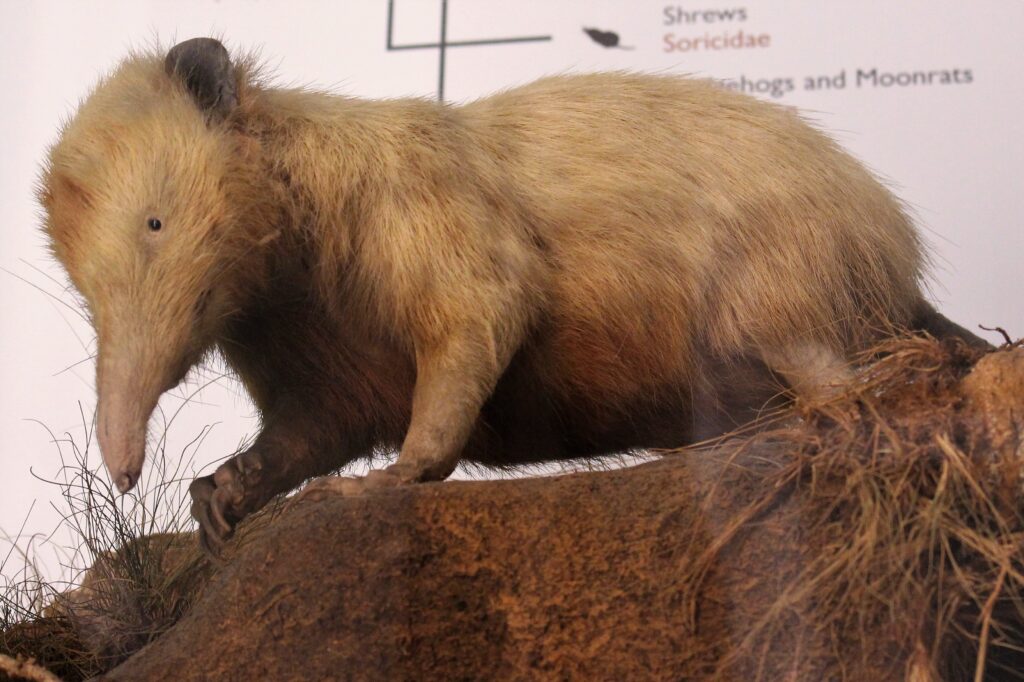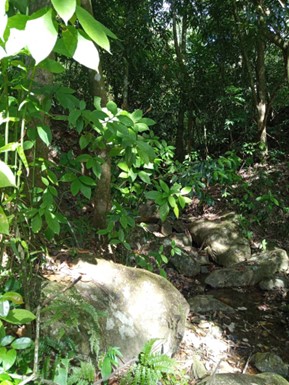It’s not a mouse. It’s not a rat. In fact, it’s not a rodent, not even a little bit. It’s not a shrew, either. It has poisonous saliva like a viper, and glands that make it smell like a goat. It has a long, flexible snout like a tapir, and apparently it can echo-locate like a bat.

So what in the world is it? The answer, it turns out, is complicated. At least the short answer is easy – it’s a solenodon. But what in the world is a solenodon?
Well, it turns out the solenodon is pretty much its own thing. It is distantly related to the shrews, and it is an insectivore (a group that also includes a variety of odd creatures, from the mole to the hedgehog). However, the solenodon, or at least its ancient relatives, likely split from other proto-insectivores back in the Cretaceous – meaning that they were running around when the dinosaurs went extinct!
The term solenodon means ‘groove-toothed’ and relates to the groove in their incisors where venom trickles from glands in the mouth. The venom is much the same as the venom found in the short-tailed shrew, found right here in Massachusetts. That’s right, we have a poisonous mammal in our midst – but while short-tailed shrews are the behemoths of the shrew world, they’re still hardly bigger than a good-sized mouse, so you have little to worry about.
You have even less to worry about when it comes to the solenodon. First, while it is larger than a shrew (perhaps the size of a store-bought guinea pig), it is only found on two Caribbean islands, with one species found on Cuba and one on Hispaniola. Second, it is extremely rare, and in fact the Cuban solenodon (known in Cuba as the almiquí) has been listed as Endangered by IUCN, meaning the population is low, rapidly decreasing, and in danger of extinction.
And that’s where Zoo New England comes in. We are a major supporter of an initiative to protect and conserve the Cuban solenodon. This is largely focused in and around Alejandro Humboldt National Park, one of the last relatively pristine forest areas left on the island. The park gets up to 150 inches of rain a year – for comparison, Boston gets about 44 inches of precipitation, both rain and snow, a year. So the park would easily qualify as a rainforest. However, it is also very rugged and mountainous, with ridges and steep hillsides that create multiple microclimates, and with different soil types in different areas that support unique assemblages of plants and animals.

This is the last stronghold of the Cuban solenodon, and our partners on the ground there are working hard to find out where the animal can still be found and what threats they face. This past year the team embarked on a number of (very wet) multi-day camping surveys, finding solenodon sign (burrows, foraging sites where they dig for their invertebrate prey, prints, and scat) in a variety of locations. Which was very good news.
Unfortunately they also found a great deal of sign of feral dogs and cats in the park, both of which are undoubtedly significant predators on the fairly slow-moving solenodon (the poison is effective on earthworms and insects, but it is not likely to stop a dog or cat). There is also illegal logging in the forests, and fire is an ongoing and growing threat to the solenodon’s habitat, moist as it may be.
As part of the effort to raise awareness and encourage conservation of this fragile landscape and the Endangered solenodon among the communities around the park, the team also performed a variety of different educational events, reaching over 2,700 people, with different events focusing on children, farmers, women, teachers, and the elderly. Participants learned about the solenodon and its unique place in the world, and also learned about climate change, forest protection and reforestation, the danger of non-native predators, and a host of other information through lectures, games, and art. It is early days for the program, but with a dedicated team of conservationists now focused on protecting and recovering the unique solenodon, there is now also hope. It seems right that for an animal whose past goes so far back that its ancestors once scurried between the giant feet of dinosaurs, Zoo New England is helping to establish a future for the Cuban solenodon.
